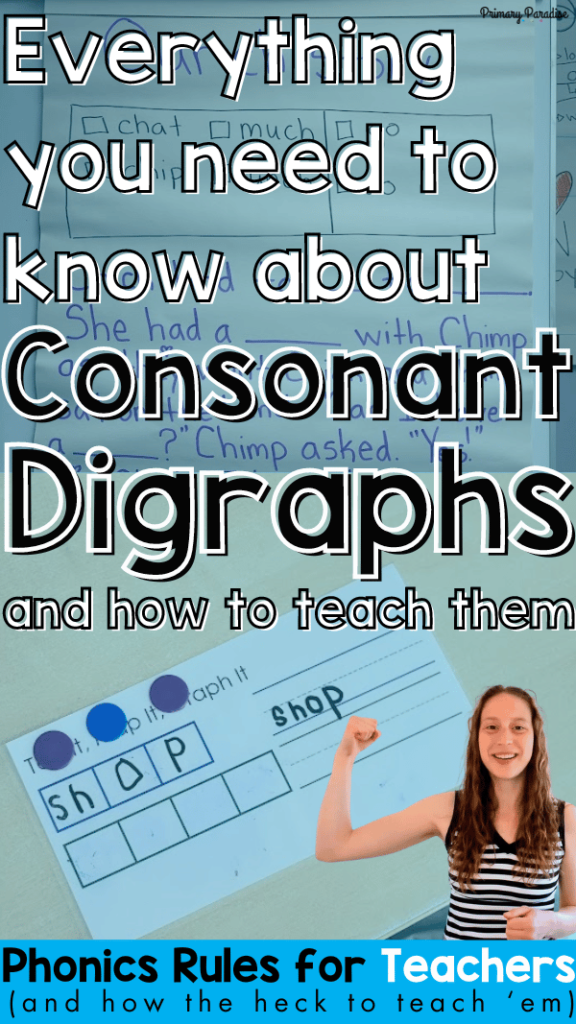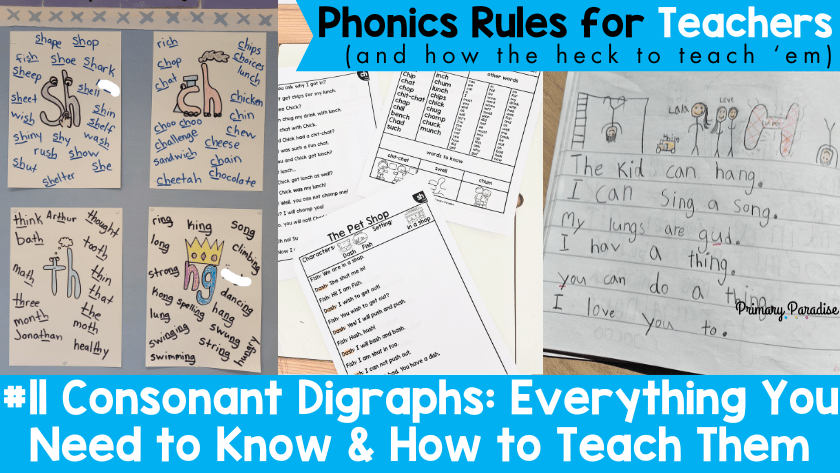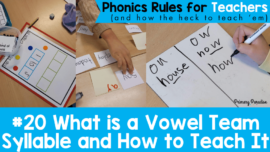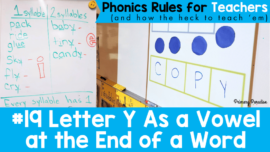Consonant digraphs are one of the first letter combinations your students need to learn to be strong readers and writers. Let’s take a look at what a digraph is, the spelling of the most common digraphs, and how the heck to teach ’em.
This is post 11 in my series Phonics Rules for Teachers (and How the Heck to Teach ‘Em). If you’d like to see previous posts, you can click here.
Would you rather listen or watch? Find a podcast version of this blog post here, or watch the video below.
What is a digraph?
A digraph is simply a combination of two letters that represent one sound.
What is a consonant digraph?
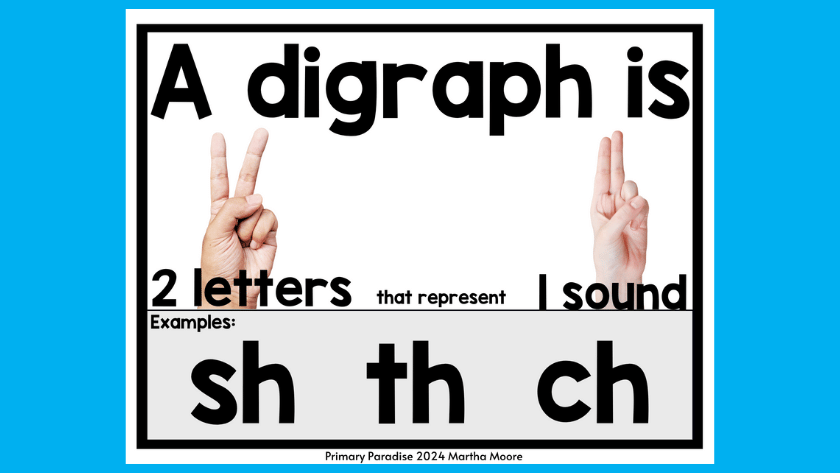
A consonant digraph is a combination of two consonant letters that represent a consonant sound. (Read about the difference between consonant and vowel sounds here).
Understanding Consonant Digraphs
What do students need to know before learning about digraphs?
Before you begin to teach consonant digraphs, you want to make sure your students have a firm understanding of these concepts.
- the difference between letters and sounds
- the difference between consonants and vowels
- how to write and read single letters
- how to write and read short vowels
- what a closed syllable is
Once they have mastered the above skills, you are ready to begin learning about digraphs. The first digraphs to focus on (and the order isn’t super important) are: sh, ch, th, ng, and ck.
When introducing consonant digraphs, you can explain to students that we’ve learned that letters represent sounds. You can write or show them some single letters and ask them to produce the sounds they represent. Then, you can explain that sometimes letters work together to represent a sound.
Explain that 2 letters working together to represent one sound is called a digraph. From there, it works best to focus on one digraph at a time, teach students the specific sounds each letter combination represents, and where we can find that sound in a word.
Here is a quick breakdown for each of the first consonant digraphs:
- sh– represents the /sh/ sound as in fish or shop. This spelling pattern can be found in the beginning, middle, or end of a word.
- ch– represents the /ch/ sound as in chop or much. This spelling patterns can be found in the beginning middle, or end of a word. Typically, if we hear /ch/ after a short vowel at the end of a syllable, it is spelled with the tch spelling pattern (example pitch or match). There are some exceptions to this rule like such and much.
- ng-represents the /ŋ/ sound as in thing or rang. This spelling pattern is typically found at the end of a syllable or word. When it is found in the middle of a word, it often is pronounced slightly differently (think angry vs bring).
- th- represents two sounds because th can be voiced as in these or unvoiced as in this. Th can be found in all positions in a word.
- ck-represents the /k/ sound as in pick. It is found at the end of a word or syllable, and will never spell /k/ in the initial sound in a word. (I will cover the specifics of when to use ck vs k in our next post.)
Strategies to Teach Consonant Digraphs
As I’ve already stated, it works best to teach the overall concept and idea of a digraph- two letters that represent one sound- and then spend time learning about each digraph individually. I personally like to begin with sh because it’s an easy sound to pronounce. Then, I like to teach ch followed by th. Once students have a firm understanding of those digraphs, you can teach them ng and then ck.
Use visuals and prompts
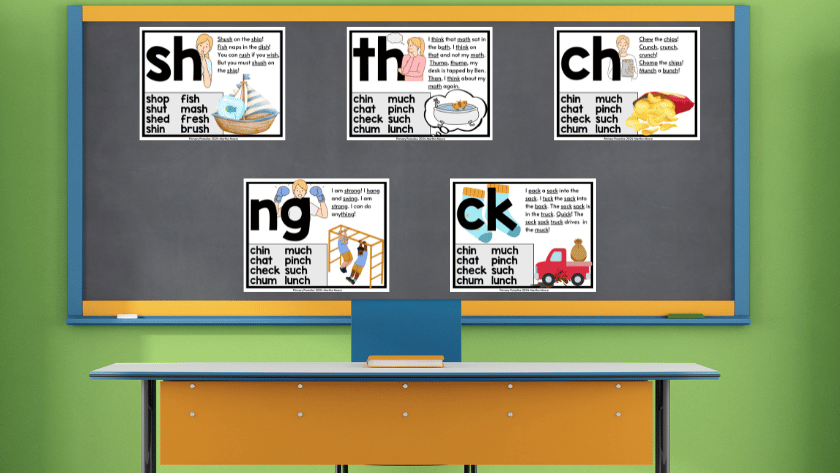
As you’re teaching consonant digraphs, you can help students recall each sound by attaching a visual and/or hand motions to each.
You can use this visual to help them remember that a digraph has two letters and one sound.
Here are the prompts I use, but you can certainly create your own. It’s important to choose prompts that will make sense to your students.
- sh-shush (finger on lip)
- ch- chew chips (hand in fist on the side of your face)
- th-think that (touch temple)
- ng- strong (make a muscle)
Word Mapping
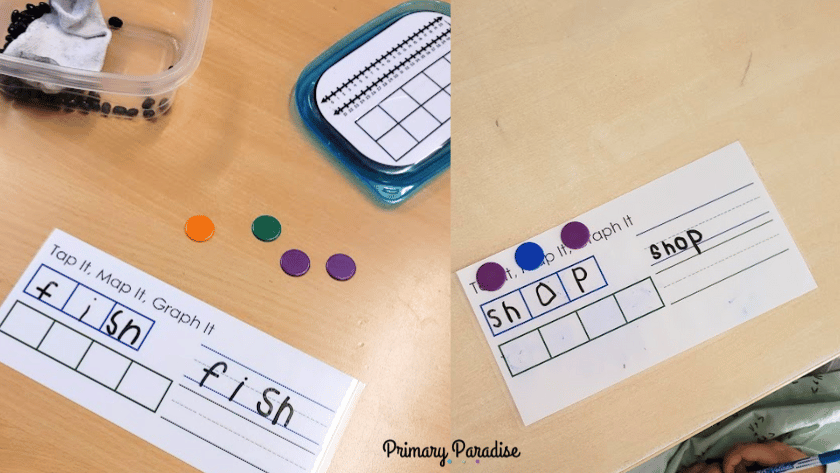
If you’ve been here for a while, you know that word mapping is one of my favorite strategies for learning new words and sounds. This is also true for consonant digraphs.
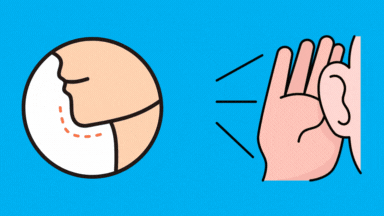
When we map words, we say the word out loud, count the number of sounds in the word and place a counter for each sound. Then, we write the letters for each sound in each box. This is a great strategy to use with new digraph words and sounds.
Add Digraphs to Your Daily Sound Drill
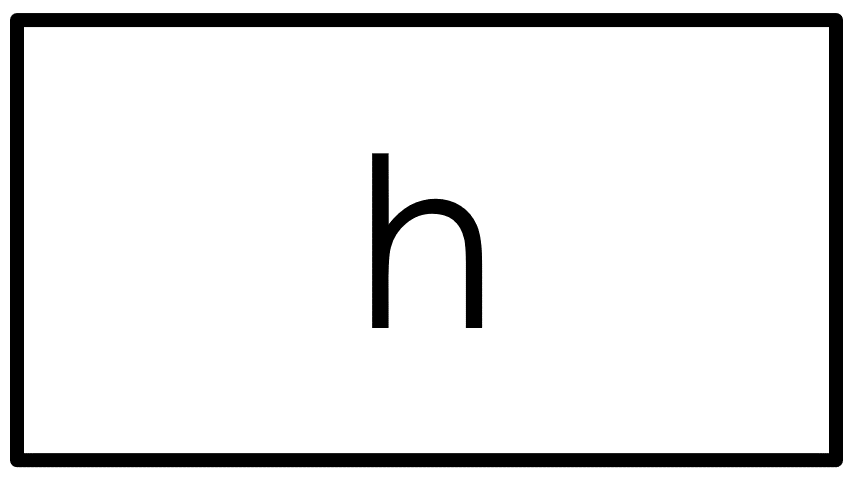
If you’re already doing a daily sound drill, add each new consonant digraph to your slides as you learn them. This daily review will help them solidify the new knowledge. A daily sound drill is just a simple powerpoint with the spelling patterns you’ve already learned. Put one spelling pattern on each slide, flip through them, and have students produce the sound(s) each spelling pattern represents.
Backwards Decoding
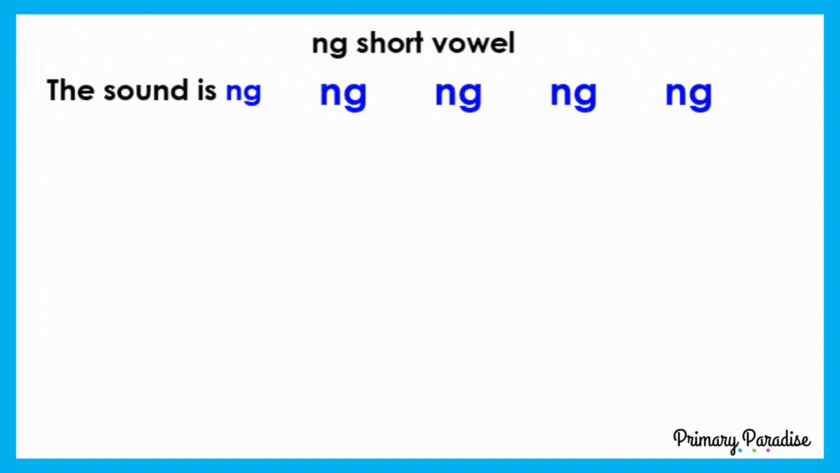
Backwards decoding is a great activity for any sound, and that’s true for digraphs as well. Create a powerpoint (or you could just write words on a white board). start with the key sound and then build the word backward from rhyme to onset. Students read each word as it appears. For example, for fish, you’d display ish then fish. This helps students focus on the vowel and get used to looking closely at the letters and spelling patterns in words as they’re reading.
Practice in Context
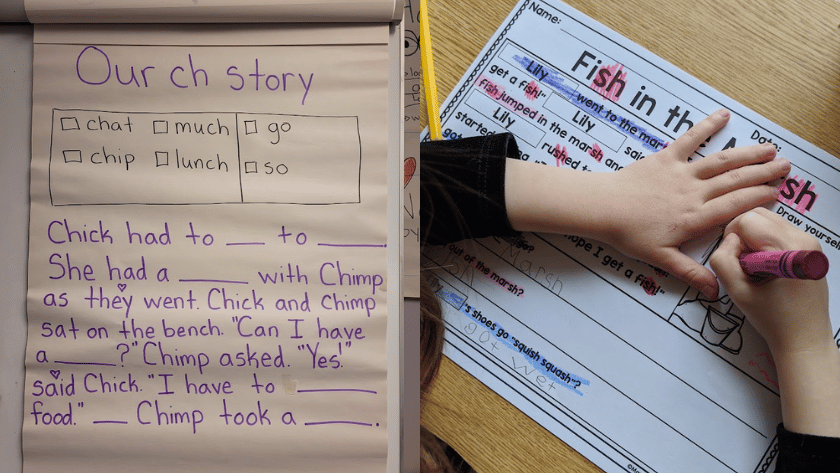
As soon as students can recognize the digraph spelling pattern and say the sound in isolation, then have students work on reading it in words and then reading it in simple, decodable texts. They can also work on completing targeted journal entries to practice writing digraph words as well. Practicing the sounds in context will strengthen their knowledge, and being able to read an write new sounds in context is the whole point to phonics instruction.
Practice in the context of closed syllables
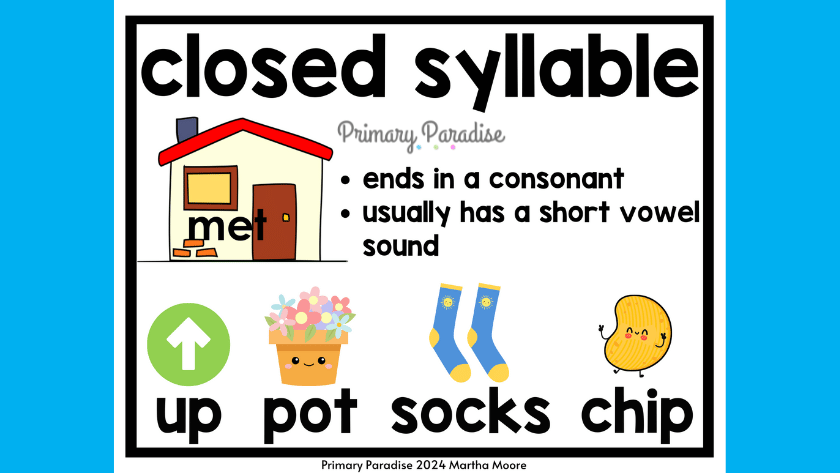
Until students have learned other syllable types, you can practice consonant digraphs within the closed syllable type. When students are coming up with examples of words with each digraph, you can absolutely write vowel team, silent e, and r controlled words on the list, but focus on having students read and write words using short vowels and closed syllables since these are the sounds they can read, write, and understand. As you progress, you should continue to point out and practice digraphs within the context of the new syllable types you’re learning.
